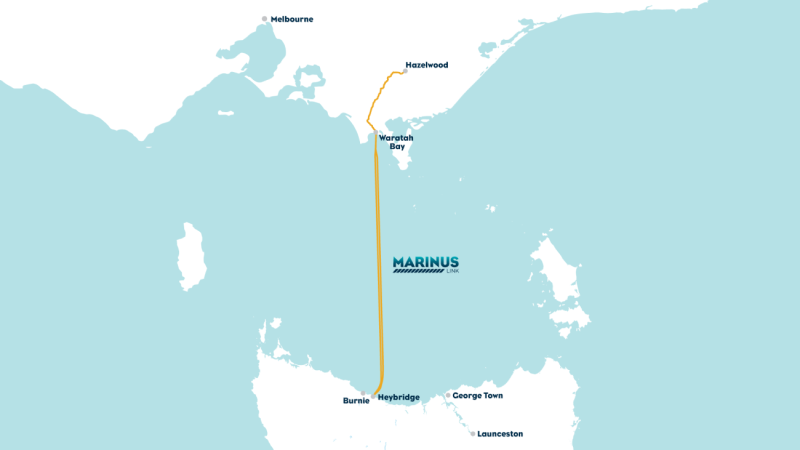Power Link Station Plan Filed for Vic-Tas Megaproject

An inter-state energy project has moved to the next stage with plans for an electricity converter station in Tasmania filed.
Marinus Link Pty Ltd has filed the plans for a $167-million converter station at the former Tioxide Australia factory, at Heybridge.
The project in the state’s north-west, between Burnie and Penguin is jointly owned by the Federal (49 per cent), the Victorian (33.3 per cent) and the Tasmanian governments (17.7 per cent).
It will create 255km of undersea high-voltage DC cable across Bass Strait and 90km of underground cable at Gippsland, Victoria, as well as two converter stations and a switching station.
It is expected about 200 workers will be employed during the two-year construction period.
A converter station transforms electrical energy between alternating current (AC) and direct current (DC). Alternating current is better suited for local networks and household use, while DC enables cost-effective, efficient transport of electricity over long distances.
The former Tioxide Australia factory operated between 1949 and 1996. It produced titanium dioxide, an intense whitening compound used in paints, plastics and more. The factory is currently vacant.
It is planned the cable will run under the beach, railway line and Bass Highway to the Heybridge Converter Station.
The undersea cable will run to Waratah Bay, Victoria, 3km west of Sandy Point.
It will then run underground to Hazelwood, 159km east of Melbourne, where the second converter station will be built.
There will be two stages to the project, the first is to deliver a 750mW capacity cable link with construction expected to start in 2026 and be completed by 2030.
Another cable link will be added as part of the second stage to bring the total capacity of the project to 1500mW or enough to power 1.5 million Australian homes.

It is also three times the capacity of the existing Tasmania-to-Victoria power cable, Basslink.
There will also be fibre-optic-data cabling included to create a fourth network link to the mainland for internet connectivity and telecommunications.
The goal is to allow more low-cost, reliable and clean energy to enter the National Electricity Market.
If completed, the project will allow Tasmania to import surplus solar energy more cheaply while storing extra energy from hydropower.
It will then be able to export the hydropower to the mainland grid as needed to reduce the risk of brownouts.
The project is also expected to lower electricity prices, and to deliver 3300 direct and indirect jobs and $3.9 billion in direct economic investment in Tasmania and Victoria.
It is will also support growth in Tasmania’s pumped hydro storage, wind generation and green hydrogen industries.















